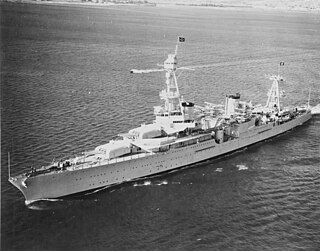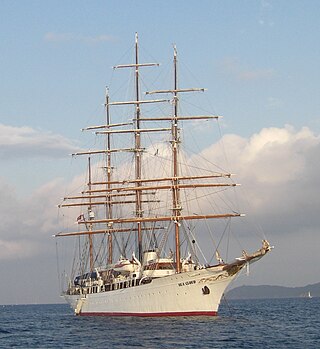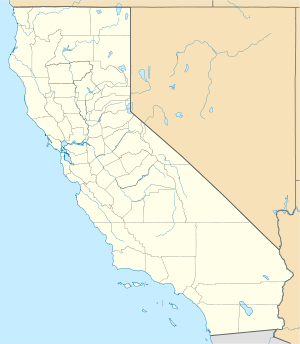
USS Houston (CL/CA-30), was a Northampton-class cruiser of the United States Navy. She was the second Navy ship to bear the name "Houston".

Battleship Cove is a nonprofit maritime museum and war memorial in Fall River, Massachusetts, United States. Featuring the world's largest collection of World War II naval vessels, it is home to the highly decorated battleship USS Massachusetts. It is located at the heart of the waterfront at the confluence of the Taunton River and Mount Hope Bay and lies partially beneath the Braga Bridge and adjacent to Fall River Heritage State Park.

USS Greer (DD–145) was a Wickes-class destroyer in the United States Navy, the first ship named for Rear Admiral James A. Greer (1833–1904). In what became known as the "Greer incident," she became the first US Navy ship to fire on a German ship, three months before the United States officially entered World War II. The incident led President Franklin D. Roosevelt to issue what became known as his "shoot-on-sight" order. Roosevelt publicly confirmed the "shoot on sight" order on 11 September 1941, effectively declaring naval war against Germany and Italy in the Battle of the Atlantic.

USS Sequoia is the former presidential yacht used during the administrations of Herbert Hoover through Jimmy Carter; setting a cost-cutting example, Carter ordered her sold in 1977.

USS Aquamarine (PYc-7) was the former yacht Siele launched in April 1926 by Pusey and Jones Corporation, Wilmington, Delaware. In 1940 Siele was sold and renamed Sea Wolf which was purchased by the Navy in January 1941 and commissioned Aquamarine in April. Though given a "patrol yacht, coastal" designation the yacht was assigned to the Naval Research Laboratory for acoustical research during World War II. After naval service the yacht was again under the name Sea Wolf until sold in 1954 and renamed Miss Ann, listed on the U.S. National Register of Historic Places in 1998.

The third USS Augusta (SP-946) was a luxuriously furnished, wooden-hulled steam yacht which served in the United States Navy as a patrol boat.

USS Mayflower (PY-1) was a 275 ft (84 m), 2,690 t (2,650 LT) motor vessel originally built as a private yacht that went on to serve in a variety of military, governmental, and commercial roles.

USS Williamsburg was a US Navy gunboat. A former private yacht, it also served as a presidential yacht from 1945 to 1953.

Lanikai, was a wooden hulled schooner-rigged diesel powered yacht in service with the United States Navy during both World War I and World War II, before being transferred to the Royal Australian Navy.

USCGC Cuyahoga (WIX-157) was an Active-class patrol boat built in 1927 which saw action in World War II. Cuyahoga sank after a night-time collision in the Chesapeake Bay while on patrol in 1978. She was later raised and re-sunk as an artificial reef off the Virginia coast and is a popular recreational dive site.
Presidential yacht may refer to a vessel of a country's navy that would be specially used by the country's president. It is common for a vessel to be designated as the presidential yacht during a fleet review.

The third USS Calypso (AG-35) was launched 6 January 1932 for the United States Coast Guard as USCGC Calypso (WPC-104) by the Bath Iron Works in Bath, Maine. She was initially stationed at San Diego, California, and transferred to Baltimore, Maryland in 1938. She was transferred from the Coast Guard to the U.S. Navy on 17 May 1941 and commissioned the same day.

USS Sylph (PY-5) was a steel hulled steam yacht that served as a presidential yacht operating from the Washington Navy Yard from the late 19th century through the presidency of Woodrow Wilson. Afterwards the yacht was used by the Secretary of the Navy and Assistant Secretary of the Navy. After decommissioning and sale in 1929 the yacht was used as a party fishing boat in New York and later a ferry. Sometime around 1950 the line went out of business and the vessel was abandoned at a pier at West 37th Street, Sea Gate, Brooklyn. The pier and abandoned vessel were reduced by fire and storms to the waterline and wreckage in the sands which still may be exposed by storms.

Sea Cloud is a sailing cruise ship owned by Sea Cloud Cruises of Hamburg, Germany. Launched as a private yacht as Hussar V for Marjorie Merriweather Post in 1931, she later served as a weather ship for the United States Coast Guard and United States Navy during World War II, when she became the U.S. military's first racially integrated warship since the American Civil War. After the war, Sea Cloud was returned to private ownership, serving as a yacht for numerous people, including as presidential yacht of the Dominican Republic. Since 1979, Sea Cloud has been used as a cruise ship.

The iron-hulled, single-screw steam yacht Utowana was completed in 1883 at Chester, Pennsylvania, by the Delaware River Iron Ship Building and Engine Works for Washington Everett Connor. On sale to Elias Cornelius Benedict the yacht's name was changed to Oneida (1887), then when Benedict bought a new yacht to be named Oneida and sale of the old yacht and conversion to a tow boat the name was changed to Adelante (1913). During Benedict's ownership Oneida was the covert site of an operation on President Grover Cleveland, a friend of Benedict's and frequent guest on the yacht, to remove a cancerous tumor in his mouth.

USS Vergana (SP-519), later OYP-519, was a United States Navy patrol vessel in commission from 1917 to 1919.

USS Cobra (SP-626) was a United States Navy patrol vessel in commission from 1917 to 1919 that operated during World War I. She originally was constructed as a private motorboat. After the conclusion of her U.S. Navy career, she served as the fishery patrol vessel USFS Petrel for the United States Bureau of Fisheries from 1919 to 1934, operating in the waters of the Territory of Alaska.

USS Katie (SP-660) was a United States Navy patrol vessel in commission from 1917 to 1918.

BRP Ang Pangulo (AT-25) is a presidential yacht that was acquired by the Philippine government in 1959. The yacht was first used by President Carlos P. Garcia.

The second USS Cythera (PY-31) was a United States Navy patrol vessel in commission from 1942 to 1944 and in non-commissioned service from 1944 to 1946. She also served in the Israeli Navy as INS Ma'oz from 1948 to 1956.


























